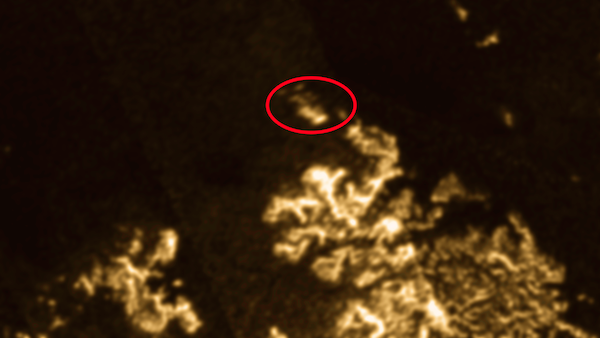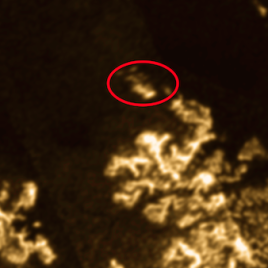
Transient features in Ligeia Mare on Titan, Saturn’s largest moon, circled in red. This image was acquired by the Cassini RADAR system on July 10th, 2013. It has been modified for aesthetic appeal and is shown in false colour. (Photo Credit: NASA/JPL-Caltech/ASI/Cornell)
For the first time, astronomers have observed waves or surface bubbles in a methane sea on the surface of Titan, Saturn’s largest moon.
While surface temperature averages around −179.5 °C, Titan is the only other planetary body in the Solar System with seas of stable liquid on its surface. The authors analyzed radar data from NASA’s Cassini spacecraft – which has monitored Titan since 2004 – and detected bright spots that were not seen in earlier or later radar images.
This suggests that Titan’s seas could react differently to the changing seasons.
Original research paper published in the Nature Geoscience on June 22, 2014.
Names and affiliations of selected authors



